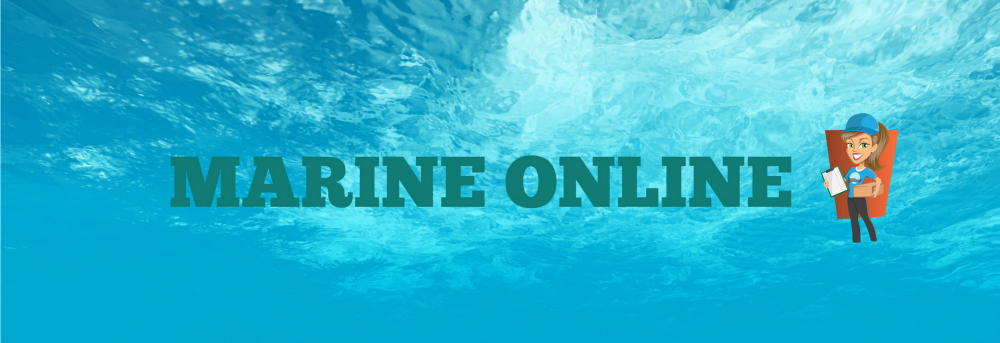Crude oil washing (COW) is a system whereby oil tanks on a tanker are cleaned out between voyages not with water, but with crude oil - the cargo itself. The solvent action of the crude oil makes the cleaning process far more effective than when water is used. (There is usually a final water rinse but the amount of water involved is very low.) The system helps prevent pollution of the seas from operational measures.
COW is mandatory on new tankers under the International Convention for the Prevention of Pollution by Ships (MARPOL 73/78).
The problem – pollution from oil cleaning operations
Development of Load on Top
Development of Crude Oil Washing
Crude oil washing regulations and specifications
The problem – pollution from oil cleaning operations
Tankers carry their cargo in a number of tanks or
compartments within the hull of the ship. Before the introduction of
segregated ballast tanks, tanks were cleaned after the oil was discharged and
about one third of them filled with seawater so that the ship's propeller is
properly immersed and it has correct handling and sea‑keeping
characteristics. This process is known as ballasting.
In the early days of oil tanker operations it was a
common practice to clean tanks by means of jets spraying seawater. The
jets washed the oil residues from the tank surfaces, resulting in a mixture of
oil and water which collected at the bottom of the tank and was then pumped
overboard. This naturally led to a considerable amount of oil getting
into the sea. The ballast water, which was pumped overboard to make way for a
fresh cargo of oil, was also contaminated.
In the 1950s, there were no alternative ways of cleaning
tanks. The OILPOL Convention, adopted in 1954, tried to alleviate the pollution
from this process by prohibiting the discharge of oil or oily mixtures within
50 miles of land. This limit was extended to 100 miles in certain areas
which were regarded as being particularly endangered.
In the late 1960s, concern about the waste of oil and
pollution caused by this process led the industry to look for an alternative.
The result was to become known as "
load on top".
Development of Load on Top
Under load on top, tanks were cleaned as previously using
high-pressure hot-water cleaning machines. However, instead of pumping the
resulting oily mixtures overboard, they were pumped into a special slop tank.
During the course of the return voyage to the loading
terminal this mixture separates. Oil, being lighter than water, gradually
floats to the surface leaving the denser water at the bottom. This water is
then pumped into the sea, leaving only crude oil in the tank.
At the loading terminal fresh crude oil is then loaded on
top of it. The process had advantages for the owner of the oil, since the oil
normally lost during tank cleaning can be saved (as much as 800 tons of oil on
a large tanker), but the main beneficiary was the environment. Some experts
believe that without load on top the amount of oil being dumped into the sea as
a result of tank cleaning could have reached more than 8 million tons a year.
Development of Crude Oil Washing
The introduction of load on top was a great contribution
to the fight against marine pollution but it did not completely eliminate
pollution resulting from tank cleaning operations. Although the amount
and rate of discharge is carefully regulated the process still resulted in some
pollution occurring. In the late 1970s an improvement was introduced.
Instead of using water, the tank cleaning machines used crude oil - in other
words, the cargo itself.
When sprayed onto the sediments clinging to the tank
walls, the oil simply dissolved them, turning them back into usable oil that
could be pumped off with the rest of the cargo. There was no need for slop
tanks to be used since the process left virtually no slops. The process became
known as Crude Oil Washing (COW).
Crude oil washing meant that the mixture of oil and water
which led to so much operational pollution in the past was virtually
ended. At the same time, the owner is able to discharge far more of this
cargo than before, since less of it is left clinging to the tank walls and
bottoms.
Crude oil washing regulations
Crude oil washing was made mandatory for new tankers by
the 1978 Protocol to the MARPOL Convention.
MARPOL Annex I Regulation 13 (6) requires every new crude
oil tanker of 20,000 tons deadweight and above to be fitted with a cargo tank
cleaning system using crude oil washing.
Regulation 13B states that COW installation and
arrangements should comply with at least all of the provisions of the
Specifications for the Design, Operation and Control of Crude Oil Washing
Systems adopted by IMO in 1978, as may be revised.
In 1999, IMO adopted revised specifications for COW by
resolution A. 897(21) Amendments to the revised Specifications for the Design,
Operation and Control of Crude Oil Washing Systems (Resolution A.446(XI), as
amended by resolution A.497(XII).
